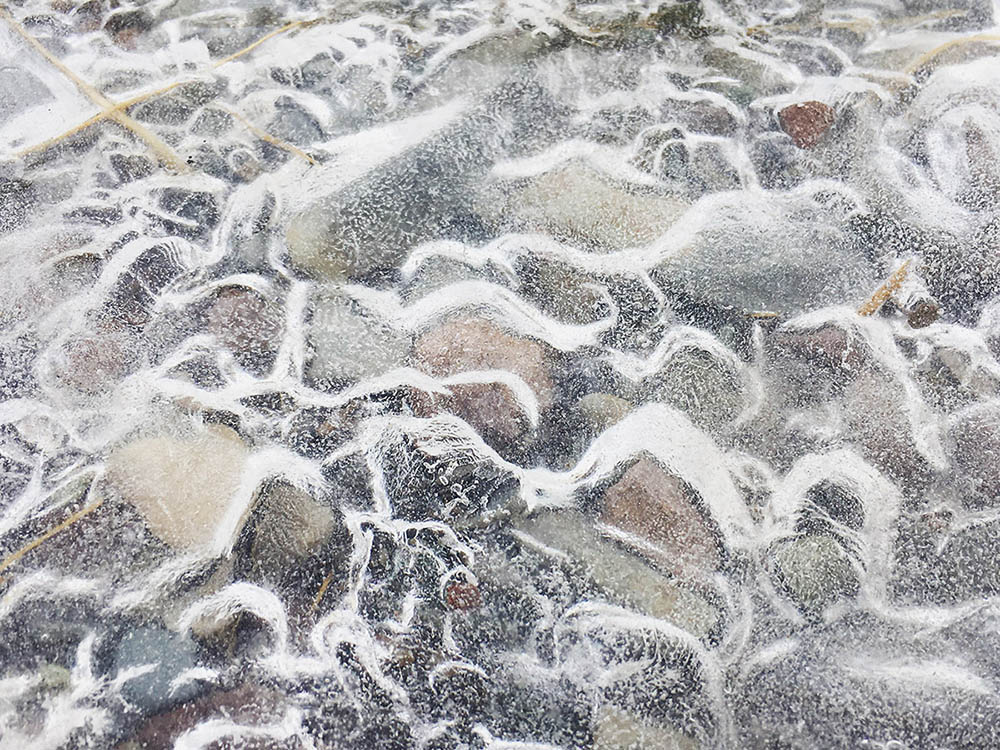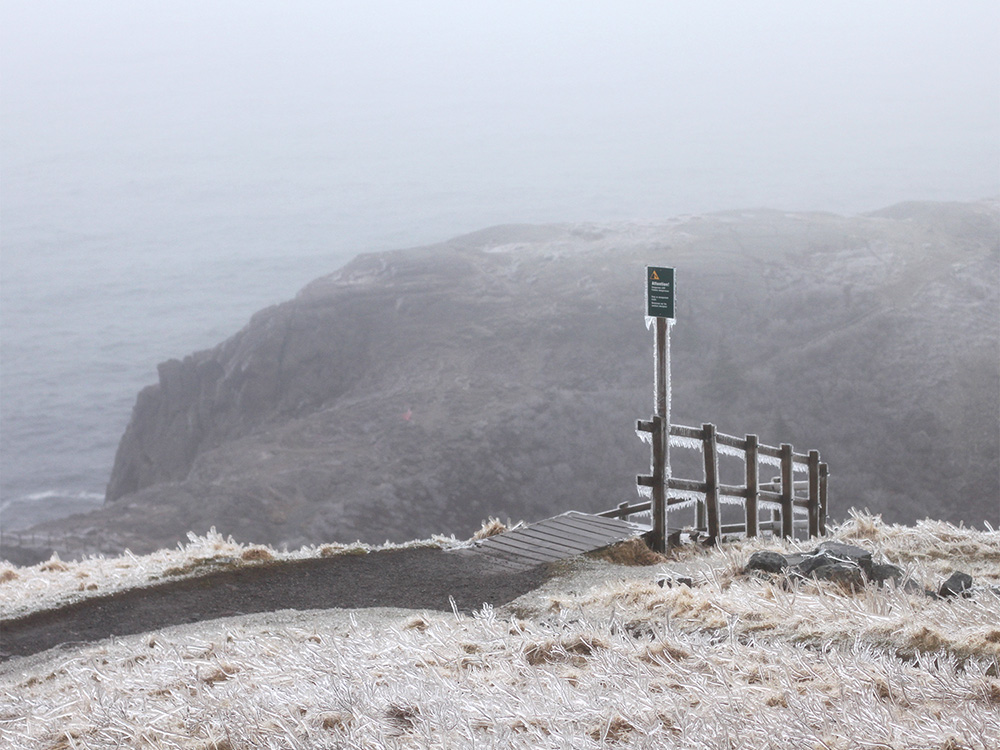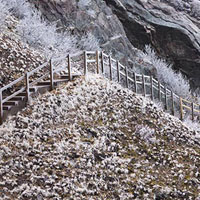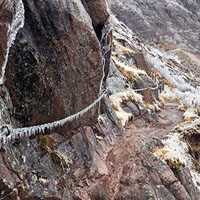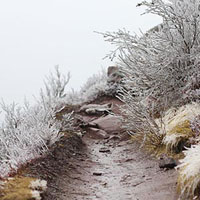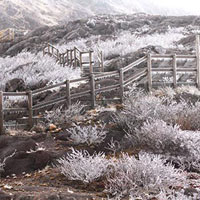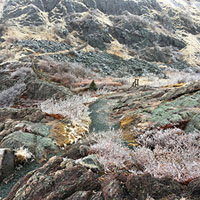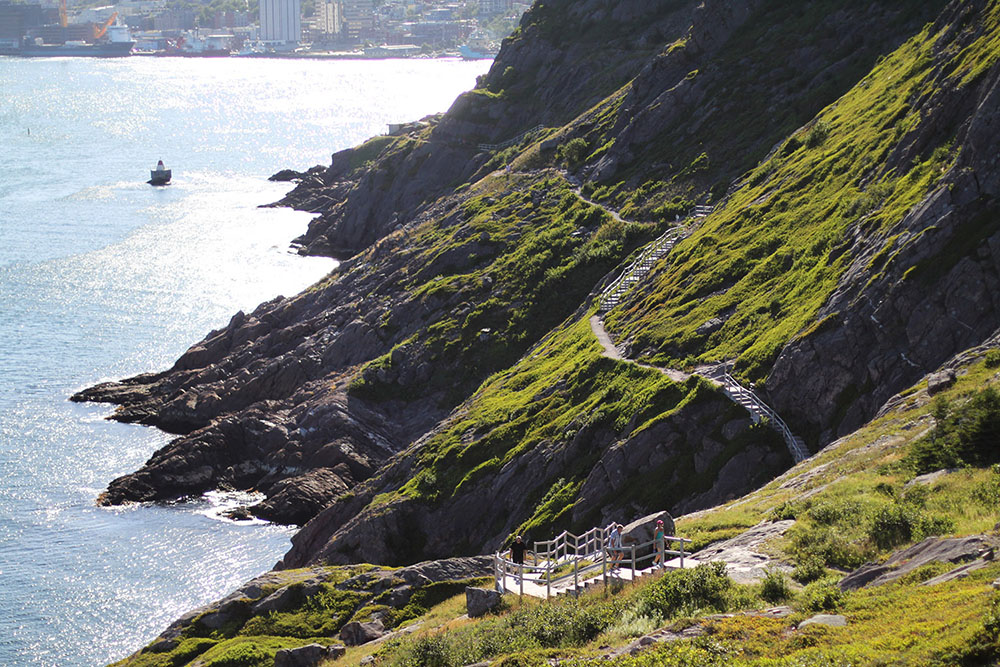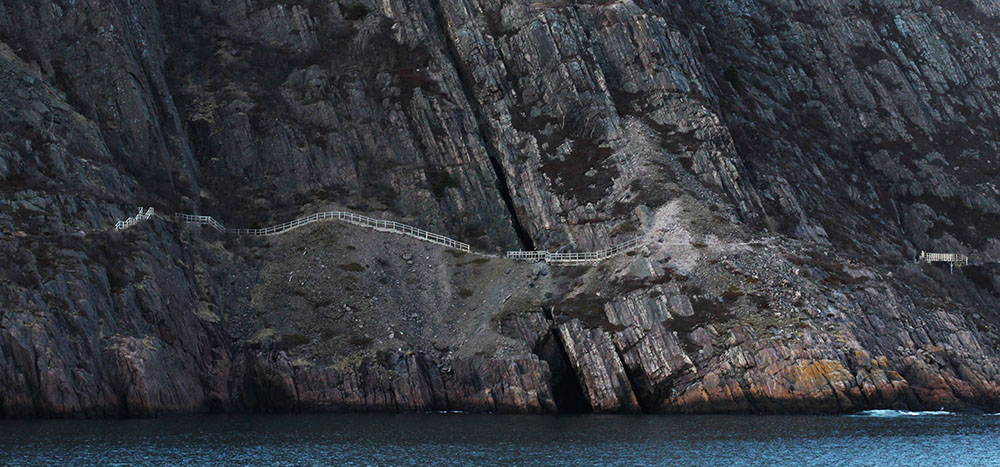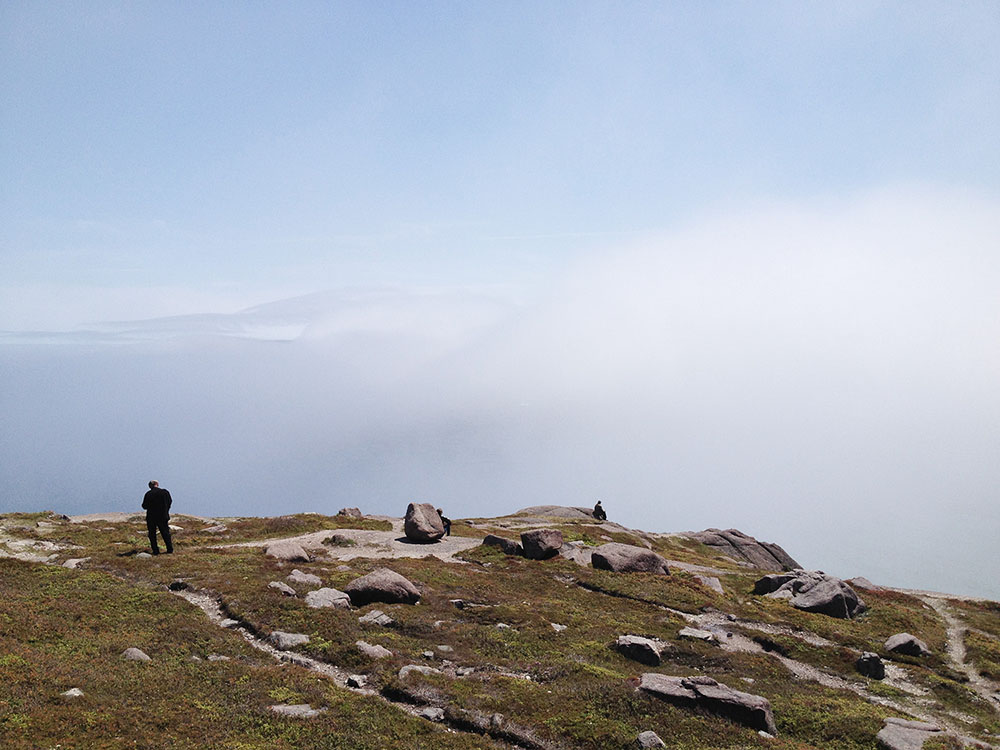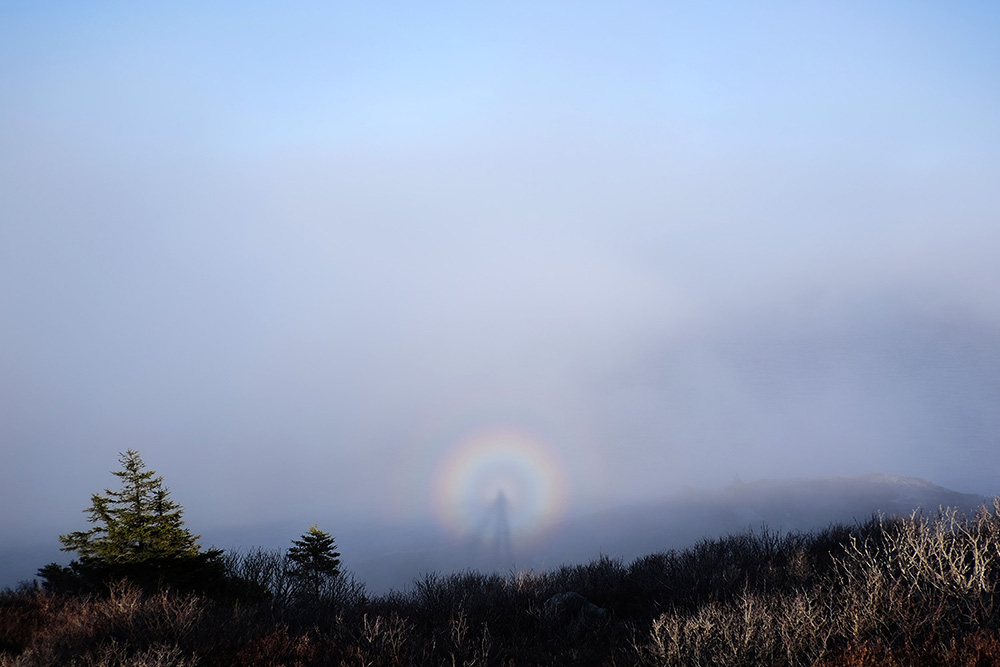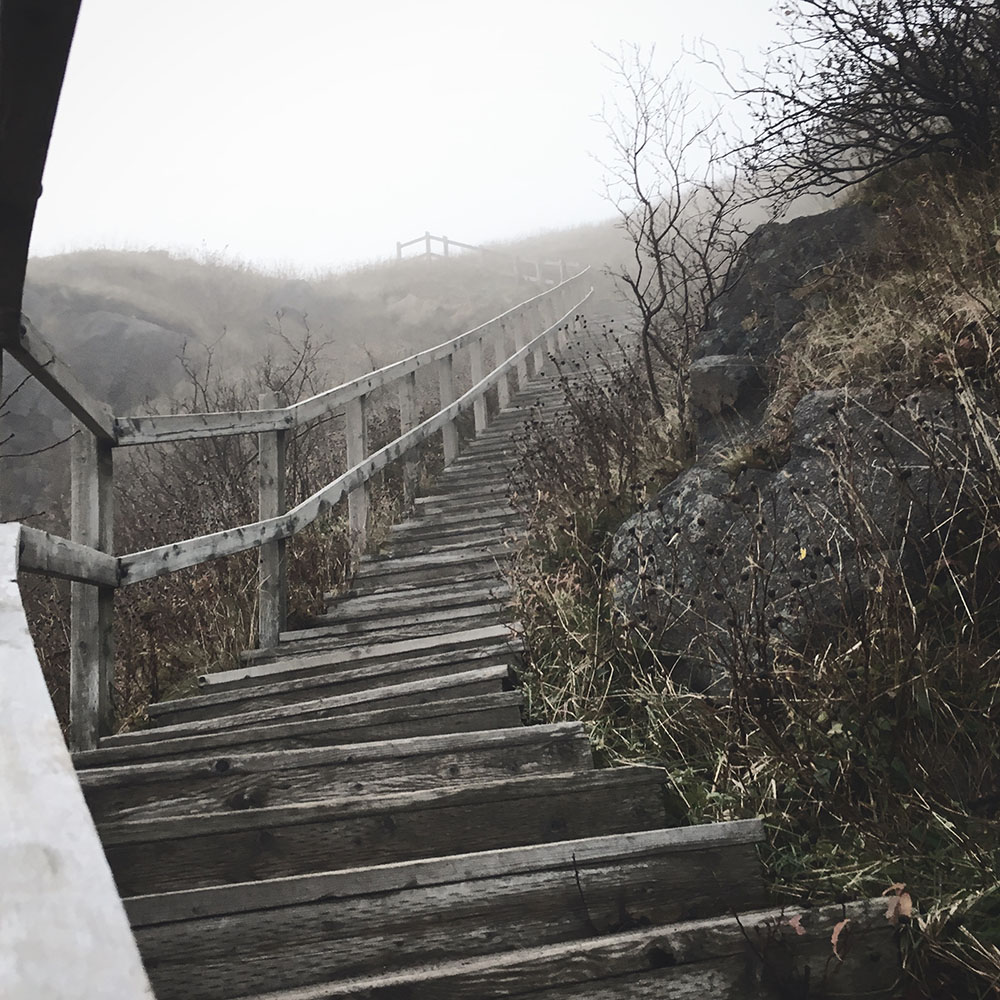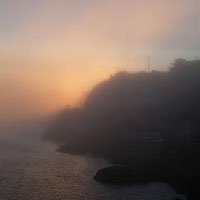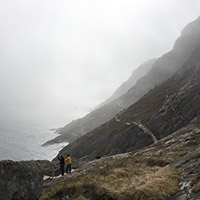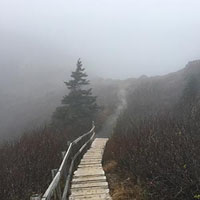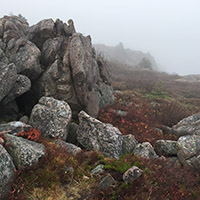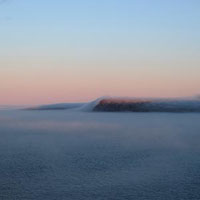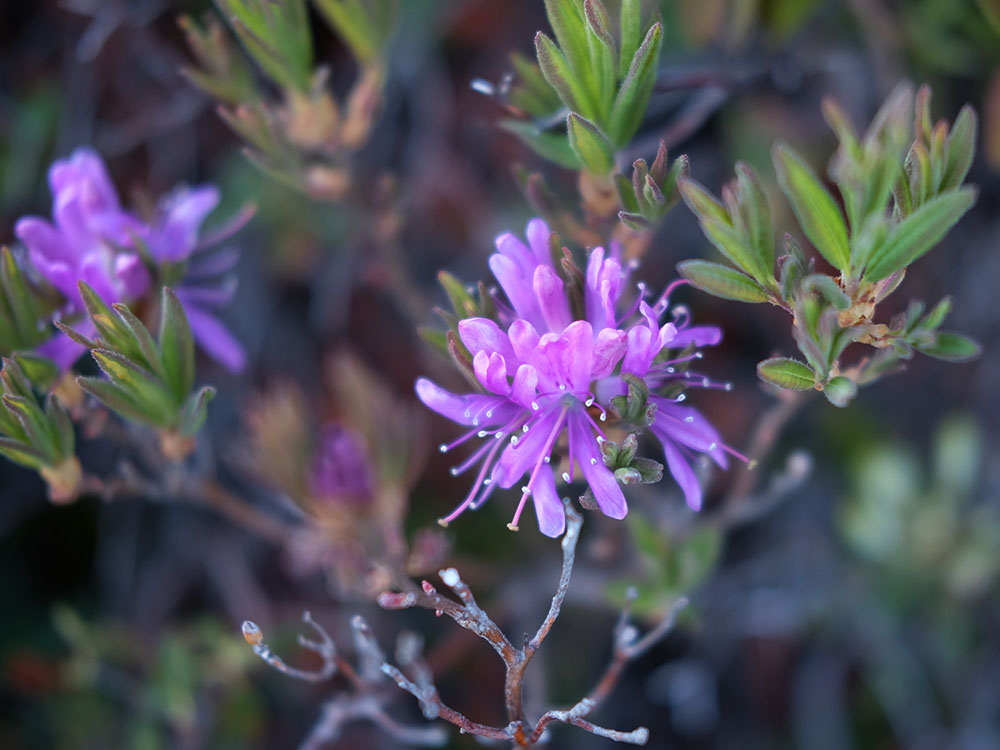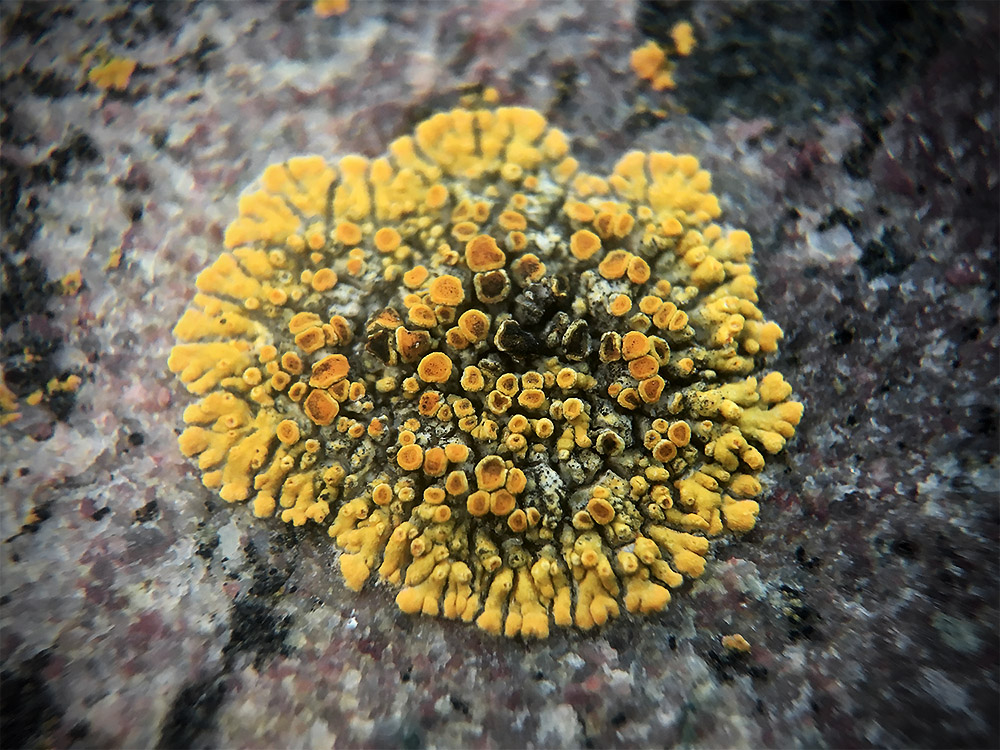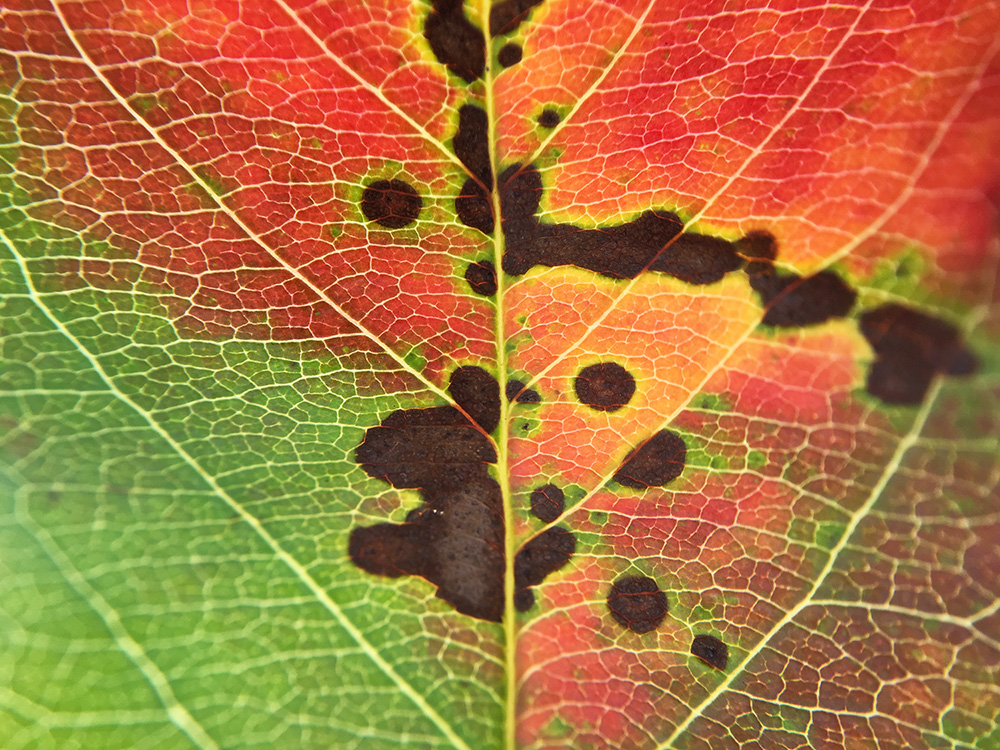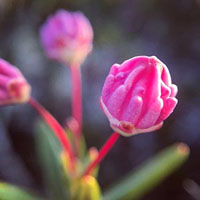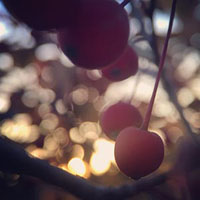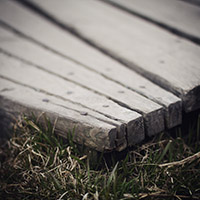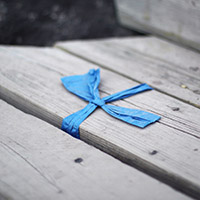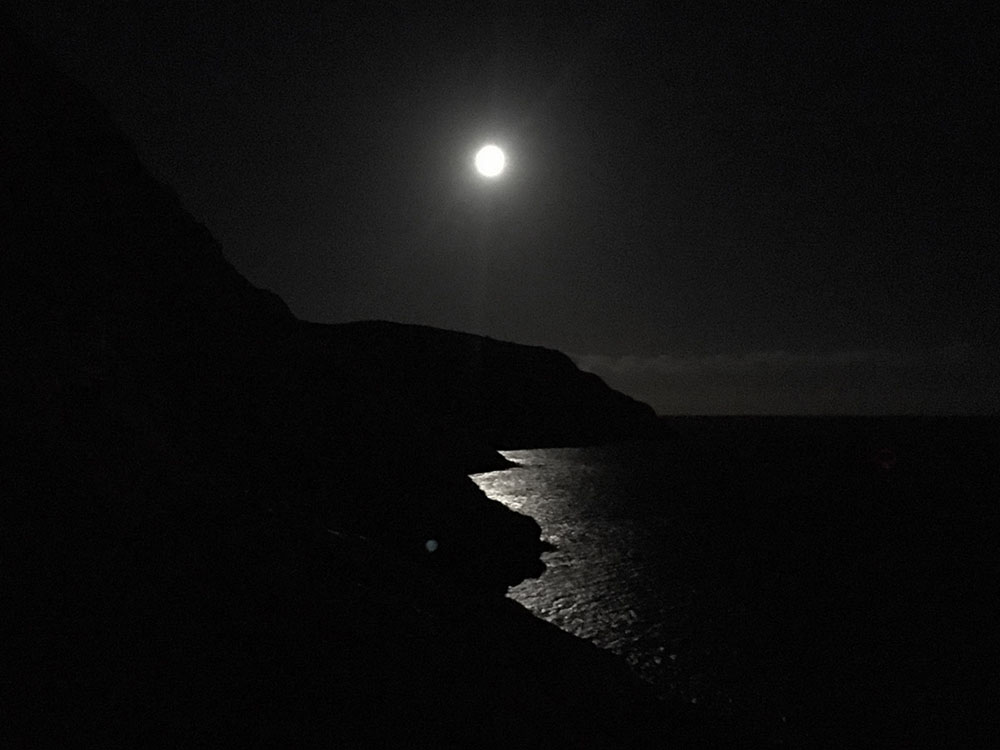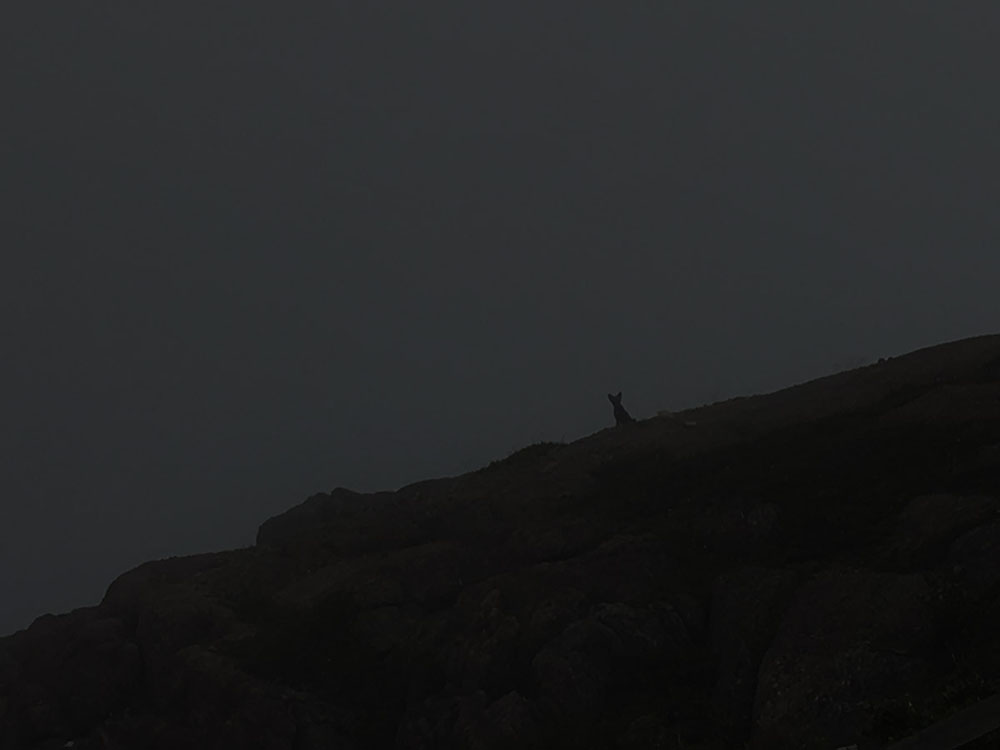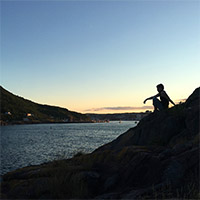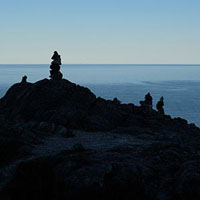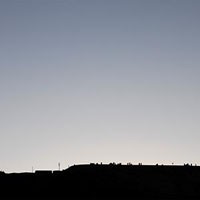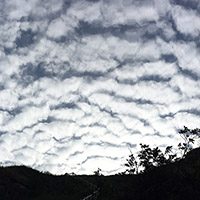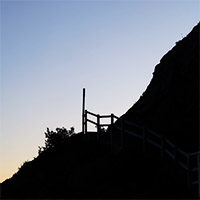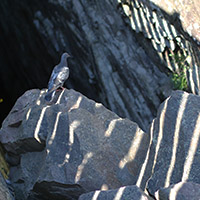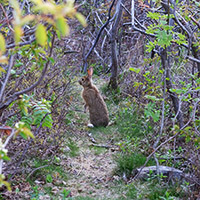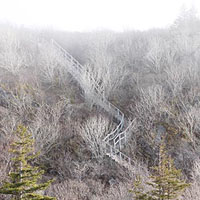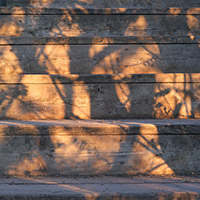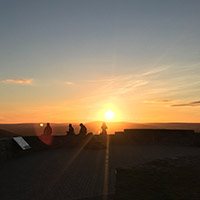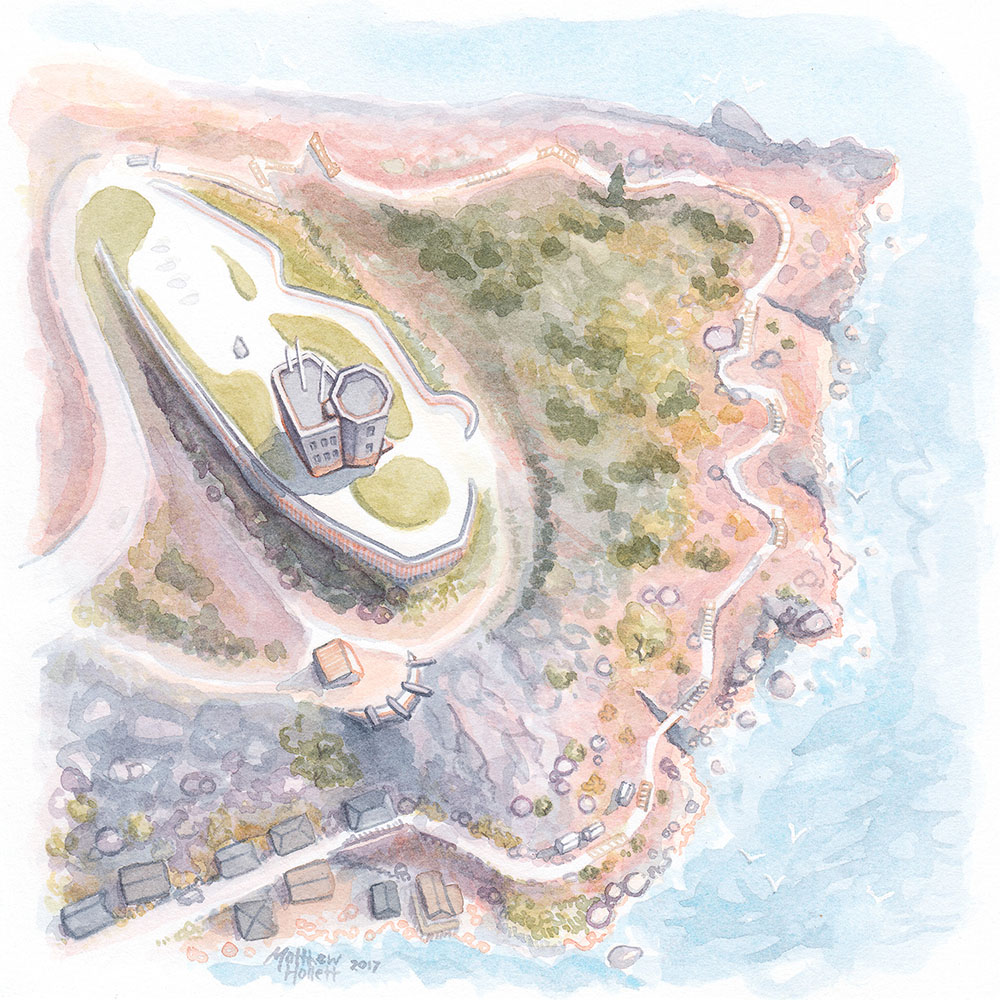Introduction
The North Head Trail stitches downtown St. John’s to the edge of the Atlantic. It feels sewn into the hillside, alternating between boardwalk and bedrock, threading in and out of fog. It meanders along the steep coastline above the Narrows, wends around Ross’s Valley to the headland, then ascends abruptly to the summit of Signal Hill.
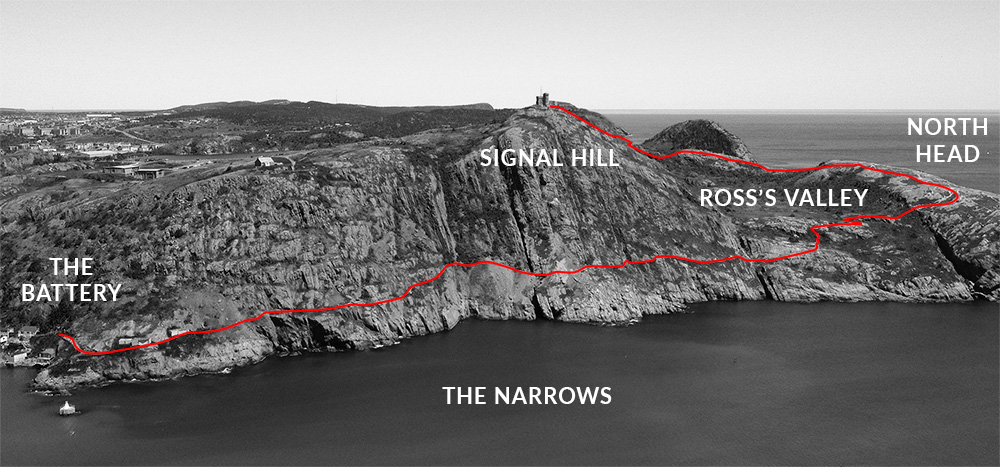
Like most walking trails, the North Head Trail is hard to pinpoint as a “place”. Over 1.7 kilometres and 150 metres of elevation, it shifts from a rural seaside ramble to a wild windswept mezzanine to a graveyard of glacial erratics. It’s a landscape of weatherworn stone, sheer hillsides and shearing wind. It’s home to colonies of screeching gulls, elusive foxes, blueberries, junipers and chuckley pears, even an apple tree. The trail swerves jubilantly, linking many places and things. But it’s fastened most firmly to the Battery, where it begins.
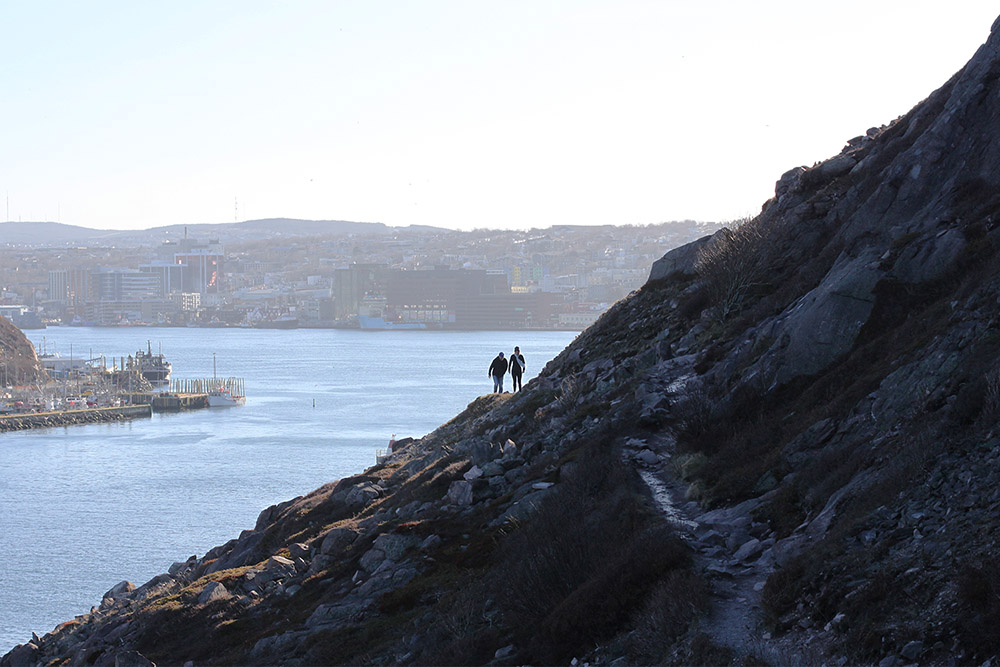
Parks Canada tends to describe the trail as “descending into” the Battery, as if it begins in the parking lot by Cabot Tower, and certainly many people hike it that way. But it likely originated the other way around, as a way to walk from the Battery out to the headland. The trail’s history is hazy – Parks notes that “it may have been in use as far back as the 1500s,” and I’m told it appears on maps from the 1700s. Before stairs were built to the summit, it would have been a natural way to access the North Head on foot.
Older residents of the Battery remember playing on the trail ages ago, before it was adopted and built up by Parks Canada. Many of their stories are collected in the wonderful folk history Out to the Battery. Wes Pretty describes playing baseball in the Valley, and Joanne Butler recalls collecting seashells and fossils. Carl Pearcey says:
“As young boys, we climbed around, especially out towards the Narrows, out in the Valley, we called it. That path that’s there now where all the people, all the tourists walk out, there are steps out there now and a chain and everything going around the dangerous spots. But when we were going out there as kids, there was none of that.”
Ross’s Valley is a hanging valley, a remnant of the same geological processes that created The Narrows. It’s mostly wetland, snarled with prickly vegetation. From the hillside above, especially if there’s a thin layer of snow, you can see the remnants of trenches that were dug in attempts to drain the land.
In his book The Lookout: A History of Signal Hill, James E. Candow chronicles a few centuries’ worth of military and architectural misadventures all over the hill, including a few attempts to build in Ross’s Valley. The most famous is the Marine Hospital, a facility which was built in 1892 in anticipation of a cholera epidemic that never happened. Nicknamed “Prowse’s Folly,” it burned down in 1911.
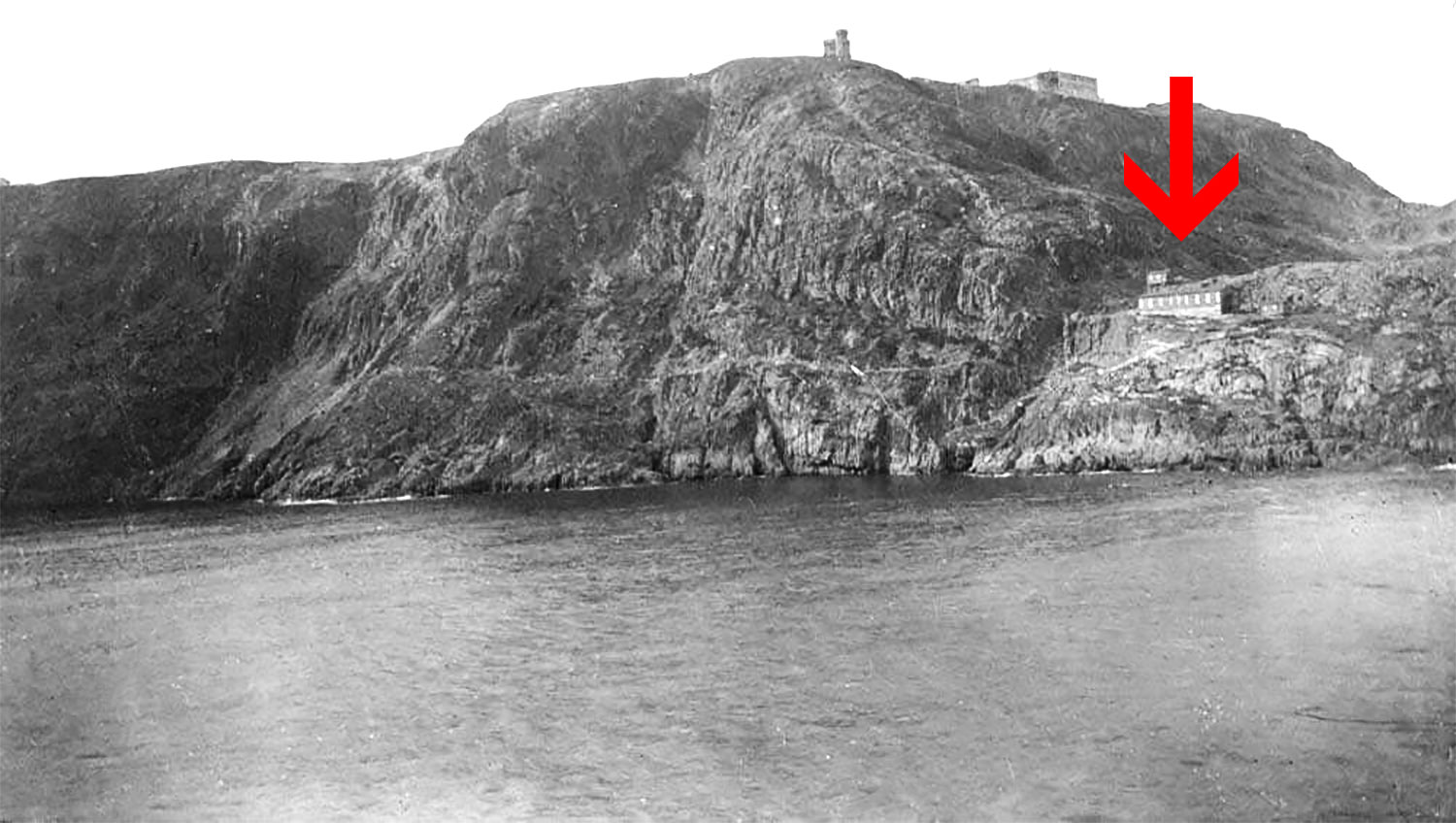
The Marine Hospital on the southern end of Ross’s Valley (see MUN Digital Archives).
Photos of the Marine Hospital are startling – anyone who has visited Signal Hill will recognize what a remote location this is. The hospital was designed to accept smallpox and cholera patients from ships on their way through the Narrows, to quarantine them from the city. Part of the path up from the shore would no doubt coincide with the present-day North Head Trail.
This cultural history is easy to overlook today, when the North Head can feel like wilderness. But there is evidence of human activity everywhere: the scraggly apple tree, iron rings embedded in rocks, pottery shards in the valley. Sadly, the valley is also littered with tires and garbage bins rolled down from above. The hill can be a busy place – tourboats and lobster traps in the water below, massive ships trundling through the Narrows, aircraft roaring overhead. And of course there are hikers and dog-walkers, whale-watchers and iceberg-hunters, and tourists who can’t resist stacking loose stones.
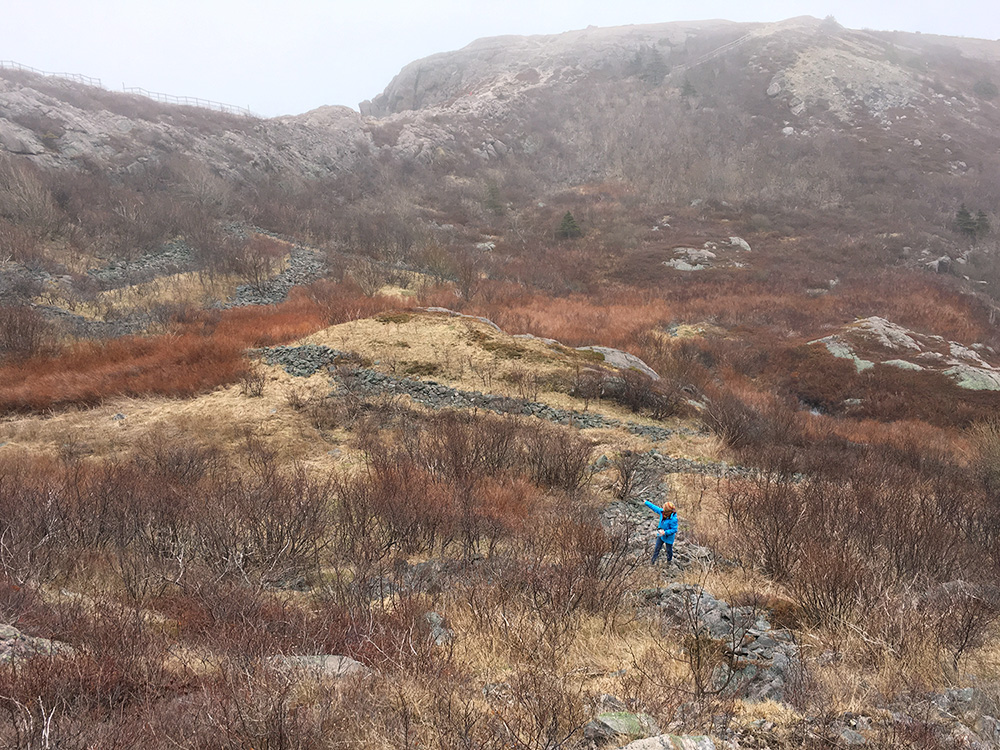
Looking down over the Valley from the hillside.
When I started this project, I set out to write twelve short passages about walking the North Head Trail, one for each month of the year. But months mean nothing to the trail. Ocean-edge effects and elevation changes send its seasonal compass spinning. Wildflowers and snow appear at different times of year than elsewhere downtown, and fog sometimes buries one part of the route while another is brightly sunlit. It’s a place in flux, a place that resists calendars and almanacs. And of course this capacity to surprise and dazzle is what draws me to the trail over and over.
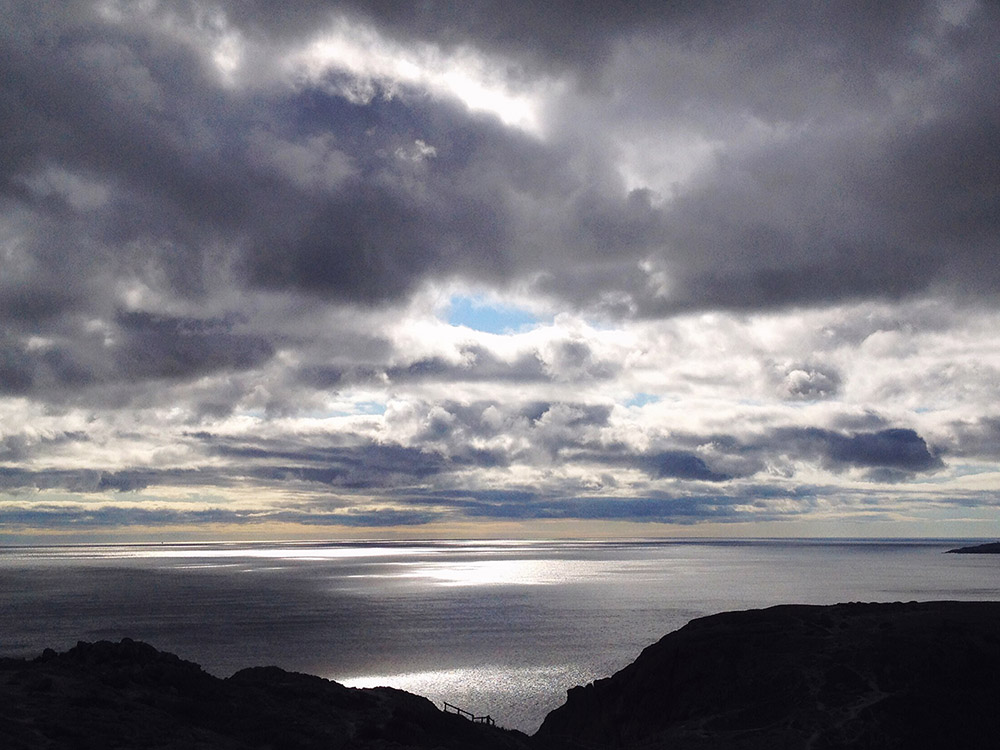
So instead of monthly dispatches, I ended up with Between Seasons on the North Head Trail. A warning, though! Parks Canada would like me to remind you that the trail is officially closed in winter, when conditions can be quite treacherous.





